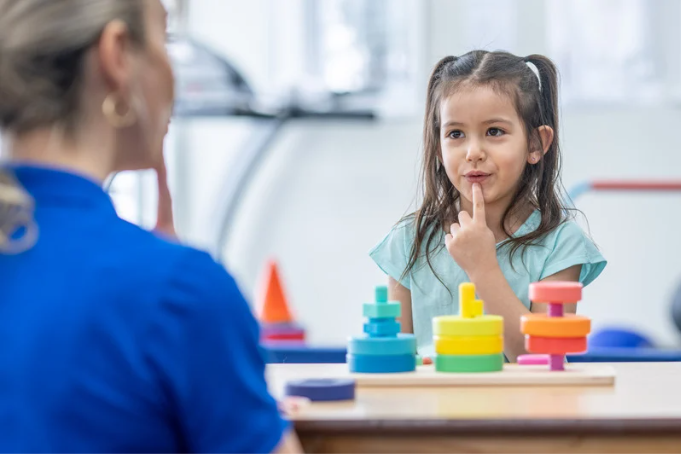
This blog explains how ABA therapy supports toddlers with autism in developing functional communication skills. It walks parents through why frustration often stems from unmet communication needs, how ABA targets those skills, and practical methods therapists use to teach language—whether verbal or nonverbal. The post offers relatable examples and tips to empower parents on their child’s journey from meltdowns to meaningful communication.
As a parent, one of the hardest things to witness is your toddler struggling to express what they want—and melting down in the process. Whether it’s pointing, grunting, crying, or throwing a toy, these behaviors often stem from one root issue: the inability to communicate effectively.
If your toddler has autism or developmental delays, you may have already heard of Applied Behavior Analysis (ABA) therapy. But what you might not know is that ABA is one of the most powerful tools for helping young children move from frustration to communication—and it doesn’t always require words.
Here’s how it works—and how it can change your daily life.
Imagine needing something—food, help, a favorite toy—and not having the words to ask for it. For many toddlers with autism, this is a daily reality. They may understand what they want but can’t express it clearly. This communication breakdown leads to behaviors like:
Screaming or crying
Hitting or biting
Avoidance or shutting down
Throwing objects
These aren’t “bad” behaviors—they’re communication attempts. ABA therapy sees them that way and uses structured, caring methods to help your child express their needs in more effective, less frustrating ways.
ABA therapy breaks down communication into small, achievable steps and teaches them through repetition, reinforcement, and positive interaction. Whether your child is nonverbal, partially verbal, or just delayed, ABA can help build meaningful communication through:
ABA therapists may use simple prompts and natural opportunities (like snack time or play) to teach your child how to request things using words. They may start with single words like “more,” “help,” or “ball,” and gradually build toward phrases and conversations.
If your toddler isn’t yet using spoken language, ABA may include:
Picture Exchange Communication System (PECS): Using picture cards to make requests
Sign language: Teaching basic signs for common needs like “eat,” “drink,” or “all done”
Speech-generating devices: For some children, tablets with communication apps help bridge the gap
The goal isn’t to force speech—it’s to give your child a reliable way to be heard.
Let’s say your toddler usually screams or cries when they want a cookie. In ABA therapy, a session might look like this:
The therapist holds up a cookie and waits.
Your child reaches or grunts.
The therapist prompts them gently: “Say ‘cookie’” or shows a picture card.
Your child imitates or uses the picture—and gets the cookie immediately.
This process is repeated until the child learns: “When I use this word or picture, I get what I want!” That’s the magic of functional communication.
✅ Fewer Tantrums
When kids can communicate, they don’t need to act out to get their needs met.
✅ More Confidence
Your child starts to feel empowered and understood—leading to happier interactions.
✅ Stronger Bond With You
When you understand each other, your relationship deepens and daily routines become smoother.
✅ School Readiness
Being able to follow directions, ask for help, and express emotions prepares your child for preschool and beyond.
ABA doesn’t just happen in the clinic—it continues at home. Your therapist will coach you on how to reinforce language skills during your everyday routines:
Let your child request things instead of anticipating every need
Use consistent words or visuals
Celebrate small wins—even eye contact or a simple sign
You are your child’s first and most important teacher.
If your toddler is struggling to speak or express themselves, you’re not alone—and you’re not helpless. ABA therapy offers a proven, compassionate path to help your child develop communication skills that reduce frustration and build connection.
Every “cookie,” “help,” or “hug” that your child learns to ask for is a step toward greater independence—and a world where they feel heard.
You don’t have to wait for full sentences to see big progress. It starts with one word, one picture, one breakthrough at a time.